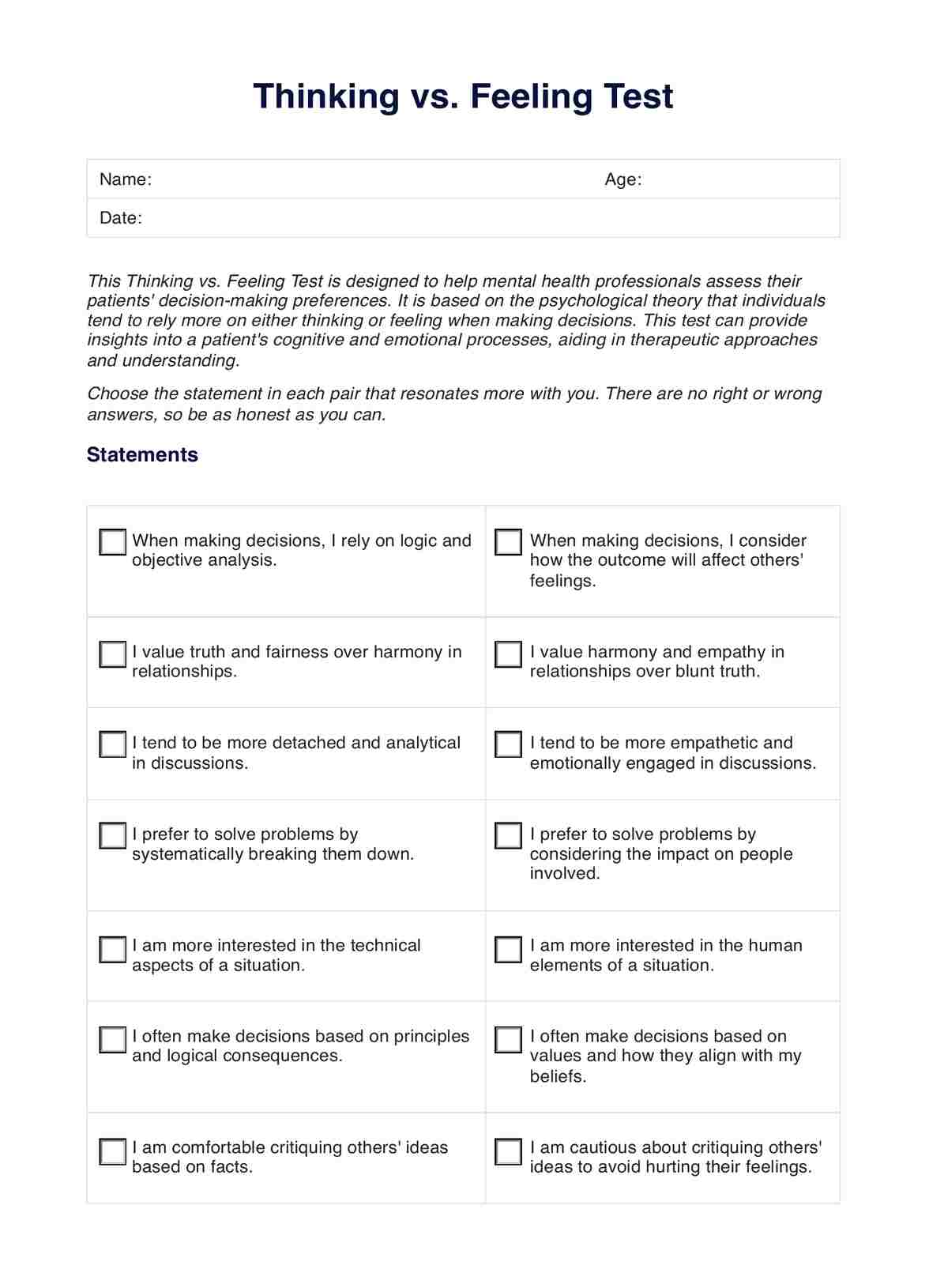You can determine if you are a thinker or a feeler by taking the Thinking vs. Feeling Test, which assesses your decision-making preferences based on logic or emotions.

Thinking vs. Feeling Test
Discover our Thinking vs. Feeling Test, a tool for mental health professionals to assess decision-making preferences and improve therapeutic outcomes.
Use Template
Thinking vs. Feeling Test Template
Commonly asked questions
Thinking involves making decisions based on logic, facts, and objective analysis, while feeling consists of basing decisions on emotions, values, and how they impact others.
Thinking learners prefer structured, logical information and analytical problem-solving while feeling learners favor a more personal, value-driven approach to learning.
EHR and practice management software
Get started for free
*No credit card required
Free
$0/usd
Unlimited clients
Telehealth
1GB of storage
Client portal text
Automated billing and online payments











